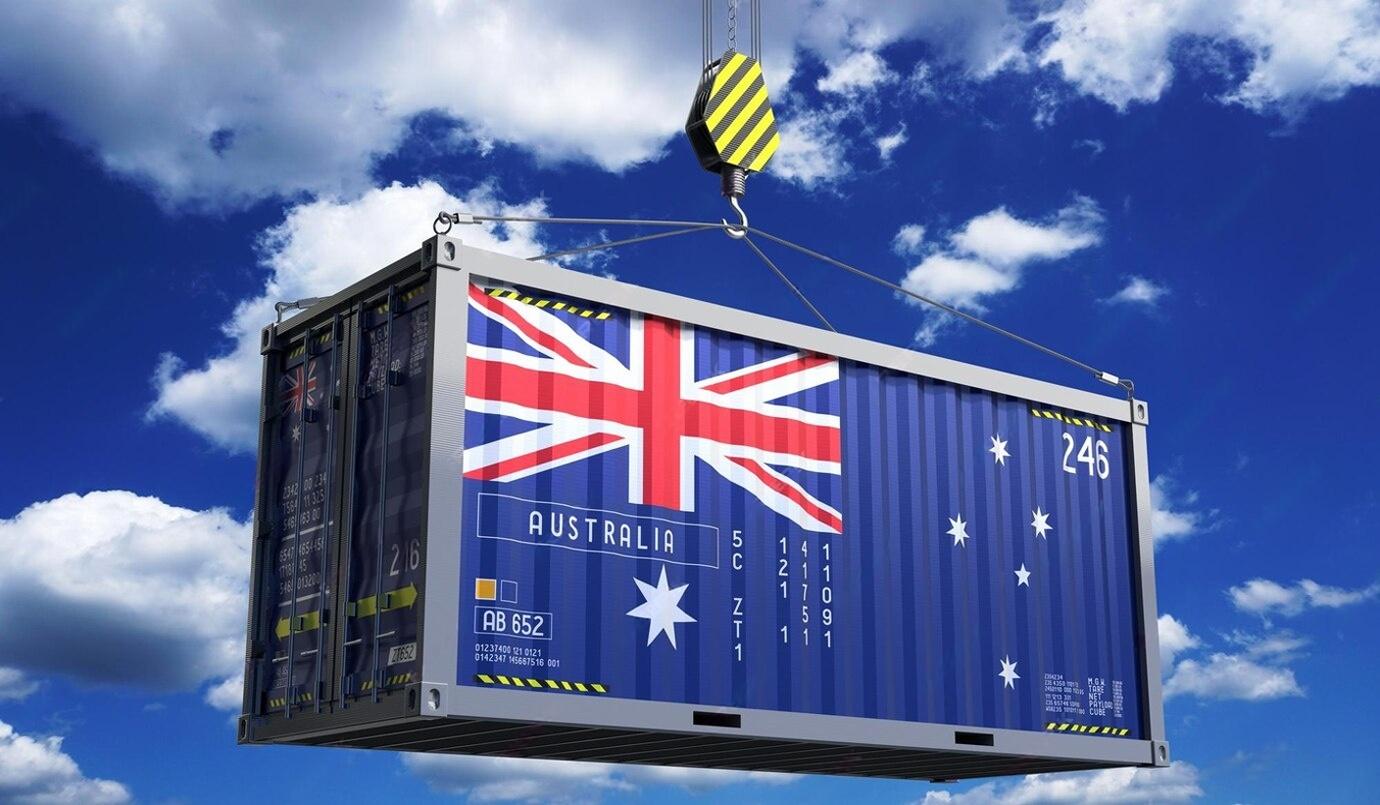Shipping Guide: Shenzhen to Sydney | 20ft Container
Your Complete Guide to Australia-China Trade Logistics
This comprehensive guide covers everything you need to know about shipping a container from Shenzhen, China to Sydney, Australia. We'll explore trade relations, port details, shipping options, costs, and import regulations to help you navigate international shipping with confidence.

China-Australia Trade Relations
China and Australia share a robust trade relationship, with bilateral trade exceeding AUD 311.6 billion in 2024. China remains Australia's largest trading partner, accounting for nearly 30% of Australia's total trade. Key exports from China to Australia include electronics, machinery, textiles, furniture, and consumer goods.
Key Trade Agreements
- China-Australia Free Trade Agreement (ChAFTA): Effective since 2015, this agreement progressively eliminates tariffs on 95% of Australian exports to China and provides significant benefits for Chinese exporters to Australia.
- Regional Comprehensive Economic Partnership (RCEP): The world's largest free trade agreement, which both countries ratified in 2021, further enhancing trade facilitation and customs procedures.
- WTO Agreements: Both countries are WTO members and adhere to international trade rules and dispute settlement mechanisms.
Under ChAFTA, most Chinese goods enter Australia duty-free, though certain products may still be subject to tariffs or require special permits. It's crucial to verify the specific tariff treatment for your goods before shipping.
Key Ports Overview
Shenzhen Port, China
Shenzhen Port is the world's third-busiest container port, handling over 28 million TEUs annually. It consists of several container terminals:
- Yantian International Container Terminal (YICT): Deep-water port handling large vessels
- Shekou Container Terminal: Focuses on intra-Asia trade
- Chiwan Container Terminal: Serves global routes including Australia
For Australia-bound shipments, Yantian is the most commonly used terminal due to its excellent connectivity and frequent sailings to Oceania.
Sydney Ports, Australia
Sydney's main container facility is Port Botany, located about 12km south of the city center. Key features:
- Three major container terminals: Patrick, DP World, and Hutchison Ports
- Excellent road and rail connections to major distribution centers
- Undergoing continuous expansion to handle increasing volumes
Port Botany handles over 2.5 million TEUs annually and is the primary point of entry for consumer goods into New South Wales. All major shipping lines servicing the China-Australia route call at Port Botany.
Shipping Options Comparison
Detailed Comparison Table
| Shipping Method | Cost Estimate | Transit Time | Best For | Advantages |
|---|---|---|---|---|
| FCL (20ft Container) | $3,000 - $4,000 | 18-25 days | Full container loads (10-20 CBM+) | Direct routing, better security, lower per-unit cost |
| LCL (Less than Container Load) | $100 - $200 per CBM | 25-35 days | Shipments under 10 CBM | Pay only for space used |
| Air Freight | $3.5 - $5 per KG | 2-4 days | Urgent, high-value, perishable goods | Fastest option, predictable schedule |
Note: All cost estimates include ocean freight but exclude customs duties, taxes, and inland transportation. Prices fluctuate based on fuel costs, seasonality, and market demand.
Import Considerations for Australia
Customs Documentation
Required documents include commercial invoice, packing list, bill of lading/air waybill, and certificate of origin. Ensure accurate commodity descriptions and HS codes.
Duties and Taxes
Goods and Services Tax (GST) of 10% applies to most imports. Some products may have additional duties - verify under ChAFTA provisions.
Biosecurity Regulations
Australia has strict quarantine laws. Wood packaging must be ISPM 15 compliant. Food, plant, and animal products require special permits.
Restricted Items
Prohibited items include weapons, illicit drugs, and certain chemicals. Restricted items require permits (medicines, firearms, heritage items).
Additional Compliance Requirements
- Product Certification: Electrical goods need Australian approval (RCM mark), toys require safety certification
- Labeling Requirements: Country of origin labeling, ingredient lists for food products
- Testing Requirements: Some products may require Australian standard testing before import
- Timber Products: Due diligence required to comply with illegal logging regulations
Step-by-Step Shipping Process
Preparation
Confirm shipment details, pack goods securely, ensure compliance, and prepare documentation. Book freight forwarder.
Export Customs
File export declaration in China. Forwarder arranges container pickup and port delivery.
Ocean Transit
Vessel departs Shenzhen, typically transits via Hong Kong or Singapore. Track shipment online.
Arrival in Sydney
Vessel arrives at Port Botany. Container unloaded and moved to terminal for customs clearance.
Import Clearance
Submit import declaration to Australian Border Force. Pay duties and taxes. Biosecurity inspection if required.
Delivery
Arrange final truck transport to destination. Container unpacked and returned to depot.
Calculating Australian Import Charges
Understanding import charges is crucial for budgeting your shipment from China to Australia. Australian import costs consist of three main components shown on the Customs Entry:
However, this duty can be reduced to 0% when you provide a valid Certificate of Origin (COO) under the China-Australia Free Trade Agreement (ChAFTA).
Where CIF Value = Cost of Goods + Insurance + Freight. Importers registered for GST can be claimed back from BAS lodgment.
Randomly selecting a number between 88 and 208 A$, request by customs not carrier or forwarder.
Let's calculate import charges for a shipment with:
- Goods Value (FOB): $20,000 USD
- Ocean Freight: $2,000 USD
- Insurance: $200 USD (estimated 1% of goods value)
- Certificate of Origin: Provided (eligible for duty-free under ChAFTA)
Step-by-Step Calculation:
| Charge Type | Calculation | Amount (USD) | Amount (AUD)* |
|---|---|---|---|
| 1. Import Duty | 5% × $20,000 = $1,000 But $0 with COO |
$0 | A$0 |
| 2. GST | (FOB + Freight + Insurance + Duty) × 10% = ($20,000 + $2,000 + $200 + $0) × 10% |
$2,220 | A$3,392** |
| 3. Customs Charges | Randomly between 88 and 208 A$ | $136 | A$208 |
| Total Import Charges | $2,356 USD | A$3,600 |
* Conversion rate: 1 USD = 1.53 AUD (current approximate rate)
** $2,220 USD × 1.53 = A$3,392 (rounded)
Note: Without a Certificate of Origin, this shipment would incur an additional $1,000 USD ($1,530 AUD) in import duties, increasing total charges to approximately A$5,130.
Key Considerations for Import Cost Calculation
FOB vs. CIF Value
FOB (Free On Board) includes only the product cost. CIF (Cost, Insurance, Freight) adds shipping and insurance costs. GST is calculated on CIF value plus duty.
Certificate of Origin
Under ChAFTA, Chinese goods qualify for duty exemption when accompanied by a valid COO. Ensure your supplier or forwarder provide this document.
Exchange Rates
Customs uses the exchange rate on the day goods are imported. Monitor AUD/USD rates as they significantly impact costs.
Additional Fees
Quarantine fees (if applicable) can add A$200-A$500 to total costs.
Reducing Your Import Costs
- Always use ChAFTA benefits: Save 5% duty with proper documentation
- Accurate valuation: Under-declaration risks penalties; over-declaration increases costs
- Correct HS codes: Proper classification ensures correct duty rates
- Optimize container space: Maximize value per shipment to reduce per-unit costs
- Monitor exchange rates: Time shipments when AUD is strong against USD
Frequently Asked Questions
-
Except China, are there other countries have Free Trade Agreements with Australia?
Yes. Including South Korea, Singapore, Malaysia, Thailand, India, Indonesia, New Zealand, the UK, the US, Chile, and Peru, have Free Trade Agreements (FTA) with Australia. Please note, not all products are duty-free under these agreements. For specific details, feel free to contact us or refer to the Australian Department of Foreign Affairs.
-
Will CargoesPi be able to apply a Certificate of Origin (COO) under ChAFTA if Chinese factory can not provide it?
Yes. CargoesPi can help with apply for a Certificate of Origin (COO) under ChAFTA even if the Chinese factory cannot provide it. We will assist you in obtaining the necessary documentation and guidance to ensure a smooth customs clearance process.
-
How much a ChAFTA COO cost?
Around 25-30US$

